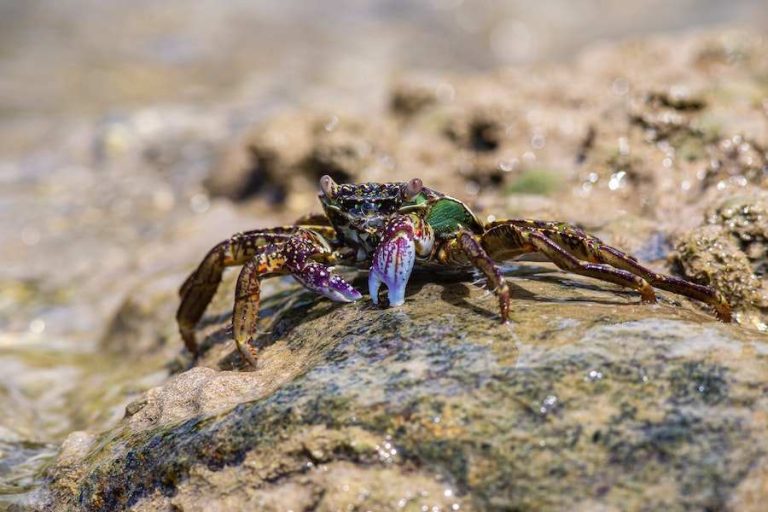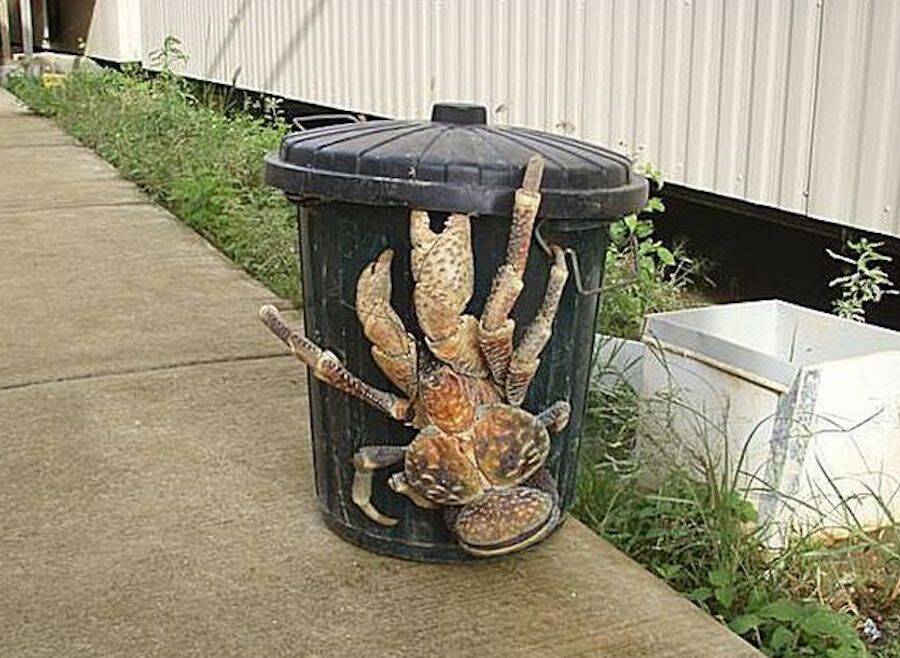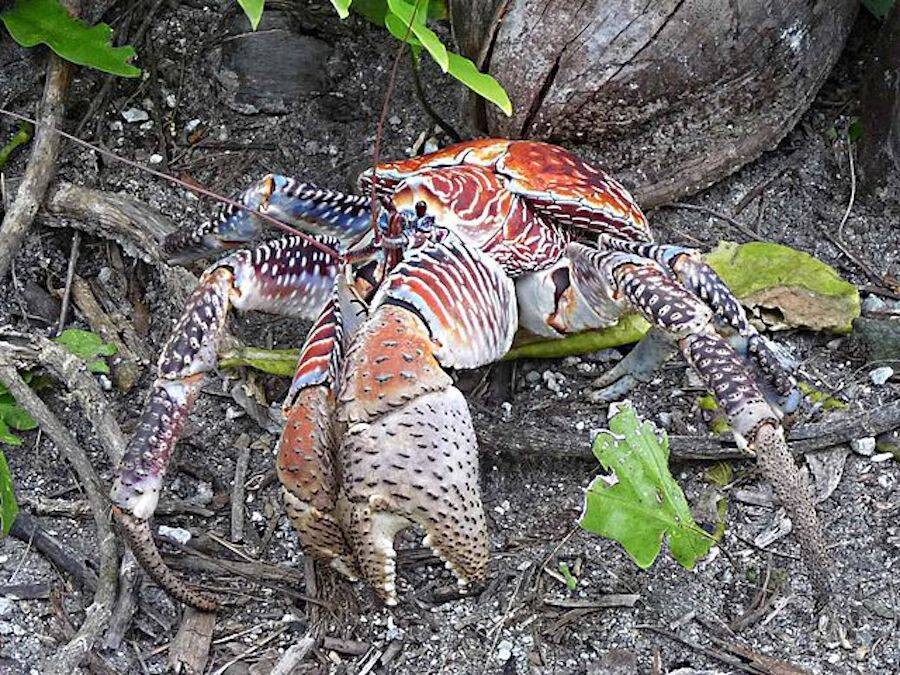With their massive claws and intimidating size, coconut crabs have a reputation as scary, dangerous creatures These giant land crabs are the largest arthropods in the world, weighing up to 9 pounds with a leg span over 3 feet wide. With the ability to crack open coconuts and claws strong enough to lift over 30 pounds, it’s no wonder people wonder – could a coconut crab kill you?
While their claws are formidable weapons, coconut crabs are not aggressive toward humans in most situations. They tend to be shy and reclusive, living solitary lives in underground burrows and emerging at night to forage for food. Coconut crabs mainly survive on fruits, nuts, and plant matter rather than hunting live prey. So under normal circumstances, they do not pose a threat to people.
However there are a few scenarios in which a coconut crab could inflict serious harm
If Provoked
Like any wild animal, a coconut crab will defend itself if threatened. Given their massive claws and incredible grip strength, a coconut crab that felt provoked could certainly pinch hard enough to break human skin and even crack bones. There are anecdotal reports of coconut crabs pinching off fingers when threatened. So while they won’t attack unprovoked, it’s best not to corner, trap, or attempt to touch a coconut crab in the wild.
If Protecting Babies
During breeding season, female coconut crabs carrying eggs or babies could become defensive and aggressive if approached. The maternal instinct to protect their young could spur them to attack with their claws. So it’s critical to steer clear of coconut crab burrows or females carrying egg masses to avoid being pinched.
If Surrounded by a Group
On their own, a single coconut crab would likely not kill a human. But surrounded by a group, the crabs could potentially use their claws and sheer size to overpower a person, especially a child. According to local legends, groups of coconut crabs were rumored to have killed people in the past, though these have not been verified. Still, it’s smart to be cautious around large groups of coconut crabs.
If Trapped or Immobilized
If a person found themselves trapped or immobilized near coconut crabs, this could create a dangerous situation. Unable to escape, the crabs might start pinching with their strong claws, causing bodily harm. This is one proposed explanation for the disappearance of famous pilot Amelia Earhart, who vanished near an island home to coconut crabs and may have been injured and immobilized.
So while coconut crab attacks are incredibly rare, their formidable claws mean the potential is there under the right circumstances. Here are some tips for staying safe around coconut crabs:
-
Give them space and don’t attempt to touch or corner them.
-
Avoid approaching females with eggs or approaching burrows.
-
Do not provoke or threaten them intentionally.
-
Keep an eye out for groups of crabs which could be more dangerous.
-
Take precautions if immobilized near them for any reason.
-
Protect children who may not understand the risks.
-
Leave them alone and admire their unique appearance from a distance!
With proper precautions, the risks posed by coconut crabs are minimal for humans. In fact, coconut crabs face more threats to their survival from predators like rats and birds who eat their eggs. Development, pollution, and climate change also jeopardize their habitat. So while a coconut crab could injure a human it perceived as threatening, they are not hunting us.
These amazing creatures play a vital role in island ecosystems. Their disappearance could have cascading impacts on seed dispersal, vegetation growth, and more. It’s important we respect the coconut crab’s space and right to exist unthreatened in its native habitat. With care and precaution, we can marvel at their uniqueness without undue fear.
So could a coconut crab kill you? It’s highly unlikely, but theoretically possible. With increased understanding and respect for these reclusive creatures, we can peacefully coexist on the islands we both call home. The coconut crab’s intimidating claws hide a vulnerable animal deserving of compassion, not fear. Their extraordinary nature deserves appreciation, not destruction.

Also known as the robber crab and terrestrial hermit crab, the Indo-Pacific coconut crab reigns supreme as the largest arthropod on Earth.

“Monstrous. That was the only word Charles Darwin could think of to use to describe the coconut crab the first time he saw one.
Of course, anyone who’s ever seen this animal can tell right away that it’s no ordinary crustacean. As the largest land crab in the world, the coconut crab’s size alone is intimidating. It can stretch three feet long, weighs up to nine pounds, and carry more than six times its own weight.
Back in Darwin’s time, many ominous tales spread about coconut crabs.
Some people told stories about how they climbed a tree and hung from it for hours with just one pincer. Others claimed that their claws could break through a coconut. And some believed that they could tear a human being apart, limb from limb.
Ever skeptical, Darwin didn’t believe most of what he’d heard. But eerily, none of it was really an exaggeration. We now know that most of the stories about what a coconut crab can do are mostly true.
Why The Coconut Crab Is So Powerful

The coconut crab — sometimes called a robber crab — boasts powerful pincers, which are some of the most dangerous weapons in the animal kingdom. Experts say a pinch from this crab can rival a lion’s bite. So there’s no question that they can do some terrifying things with their claws.
But the good news for humans is that the crabs don’t usually use their claws on us. As the name suggests, the coconut crab’s main source of food is coconuts. Most of these animals live on islands in the Pacific and Indian Oceans, so it’s not hard for them to find their favorite food.
Even so, seeing a coconut crab use nothing but its claws to open a coconut is a little scary. It’s even more unsettling when you learn that coconuts aren’t the only things that they can tear apart.
As omnivorous creatures, coconut crabs are willing to eat both plants and animals. They’ve been known to kill birds, feast on kittens, and rip apart pig carcasses. Eerily, they’ve also been known to practice cannibalism — and they will rarely hesitate to eat other coconut crabs.
In short, almost nothing is off the menu for a robber crab. They’ll even eat their own exoskeletons. Like most crabs, they shed their exoskeletons to grow new ones. When their old shell falls off, though, they don’t just leave it where it falls like other crabs do. Instead, they eat the whole thing.
Coconut Crabs Devour Pig Carcass | Searching For Amelia
Can a coconut crab kill a human?
While a single coconut crab may not be able to kill a human, if a group of coconut crabs gathered around, they indeed can kill a human. Their incredibly powerful pincers can pierce through the flesh of humans and break their bones. So, if a group of them starts to attack you as their prey, you may have to die unless you get help from someone else.
Is it harmful to eat a coconut crab?
On the Nicobarian Kamorta Island, it is believed that eating the coconut crab can cause severe, sometimes fatal, illnesses. Such taboos have been recorded in the Nicobar Islands in India and on Flores Island in Indonesia.
Are coconut crabs extirpated?
While its range broadly shadows the distribution of the coconut palm, the coconut crab has been extirpated from most areas with a significant human population such as mainland Australia and Madagascar. B. latro is both the largest living terrestrial arthropod and the largest living terrestrial invertebrate.
Can coconut crabs break open coconuts?
Coconut crabs can break open coconuts with ease and dismember chickens using their pincers. A single claw is strong enough to break a thick branch or crack open a rock. These creatures have very strong pincers and can easily break open a bottle or glass jar.
